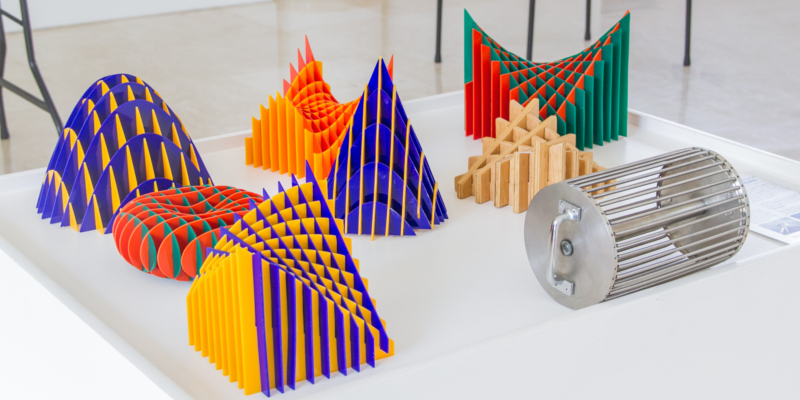RULED SURFACES
The surprising thing about ruled surfaces is the fact that a “curved” surface can be formed using only straight lines. In this example we have the hyperbolic paraboloid, or saddle, and the wooden part highlights its doubly ruled behavior (there are two distinct straight line bundles that can be used to build this surface).

The other object highlights the same phenomenon, in the case of a hyperboloid of a sheet: twisting the disks, connected by stretched wires, this ruled surface is delineated. Is she also doubly ruled?


Although the pieces on display are made of plastic, metal or wood, you can build your own hyperbolic paraboloid at home using cardboard!
Both following links are folders with assembly instructions and measures that should be used to cut the cardboard.
Try it, it's super cute to see!
